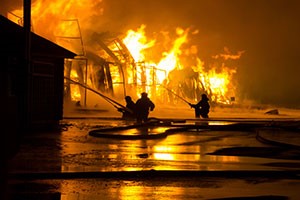How Cancer Disproportionally Affects Fire Fighters

In 2020, cancer was the second leading cause of death in the United States. Among fire fighters, cancer is the number one cause of death. According to the International Association of Fire Fighters (IAFF), occupational cancer accounts for more than 65% of line-of-duty deaths.
Fire fighters have an increased risk for specific types of cancer, including:
- Mesothelioma
- Testicular cancer
- Non-Hodgkin’s lymphoma
- Multiple myeloma
- Brain cancer
- Leukemia
One big reason for the elevated cancer rates is that fire fighters today are battling very different blazes—modern homes and businesses are full of synthetics, plastics, and chemicals that can explode much faster and cover fire fighters in toxic soot.
While preventing cancer entirely might not be possible, there are several guidelines fire fighters can follow to reduce their risk. The Leukemia & Lymphoma Society (LLS) recommends:
-Reduce exposure to diesel exhaust from the fire apparatus.
- Use and maintain diesel exhaust containment or removal systems.
- Do not leave the apparatus idling inside the station.
- Conduct an apparatus check outside if the engine needs to be running.
-Clean and care for your personal protective equipment (PPE) and self-contained breathing apparatus (SCBA) properly.
- Clean PPE by following NFPA 1851 and manufacturer’s recommendations after every fire.
- Maintain and test SCBA equipment daily to ensure that it’s working properly.
- If gear is damaged or contaminated, refer to chapter 10 of NFPA 1851 to see if it needs to be destroyed or retired.
- To avoid contaminating other areas in the firehouse or apparatus, store PPE and SCBA gear correctly.
-Wash yourself as soon as possible after every fire.
- Wash exposed face, hands, head, and neck at the scene with wet wipes or soap and water. Keep wet wipes available for easy cleanup.
- After returning to the station and cleaning equipment, shower your entire body as soon as possible and change into clean clothes.
-Always be cautious at the scene.
- Do not rely on gas detectors to determine when to wear PPE—contaminated particles still saturate the environment even when the fire is out.
- Provide as much natural ventilation as possible to burned structures before starting investigations. Fire investigators should wear appropriate breathing protection.



